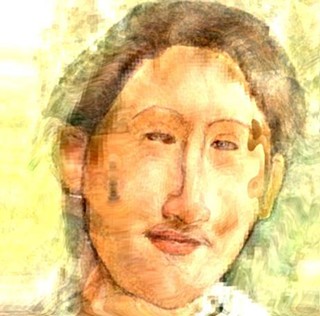Nevertheless, the otherwise celebrated musical, despite the snub its revival received during last Sunday's awards ceremony, is due for performances this weekend and next from Arizona Onstage Productions.
Stephen Sondheim's masterly musical won the Pulitzer Prize after it opened (and lost money) on Broadway in 1985, but the Tonys awarded the original show only two minor design honors. This year, a revival of George, imported from London, garnered nine Tony nominations, but was trounced by the revival of South Pacific, a much more traditional and "safe" show.
The first time around, George ignominiously lost out to La Cage aux Folles, which winning composer Jerry Herman claimed was a victory for simple, hummable tunes. And that's the trouble with George: By 1985, Sondheim had given up writing show tunes (something at which he'd proven quite adept in musicals such as A Little Night Music--think "Send in the Clowns"--and A Funny Thing Happened on the Way to the Forum). Through much (though not all) of Sunday in the Park With George, Sondheim's score mimics the painterly technique of its hero, the Impressionist artist Georges Seurat; as with Seurat's little multicolored dots on canvas, Sondheim's scoring is pointillistic, many of the vocal lines fragmentary. Only from a slight distance do they blend into a coherent musical expression.
"It's not an easy first listen for a lot of people," says its Tucson director and producer, Kevin Johnson. "You really have to engage your mind.
"This is such a hard show," he laments. "It's hard to produce, mount, direct, sing and play." Then, in the next breath, Johnson declares, "It's the most brilliant musical ever written. I've been scared to do it, because I didn't want to mess it up."
Johnson has wanted to get his hands on the show since he first saw it as a teenager. He and his pal Rob Russo became so obsessed with Sunday in the Park With George that they wore out two videotapes of its 1986 PBS broadcast. For many years, Johnson dreamed of being cast as the show's title characters--in the first act, Georges Seurat, and in the second act, an imaginary descendant of Seurat's, also named George, an avant-garde artist in 1980s New York City.
Johnson never got himself cast in the show, but now--something he wouldn't have imagined 20 years ago--he's directing it in Tucson. Russo has choreographed it once before, and Johnson brought him in to cover the complex segments he felt he couldn't manage on his own. These aren't traditional song-and-dance numbers, but as Russo says, "It counts as choreography, because it's movement for a purpose. The staging is all about balance, which is what Georges is talking about."
The first act finds Seurat in the throes of creating his masterpiece, "A Sunday Afternoon on the Island of La Grande Jatte." It's a huge painting full of figures strolling and lounging--and not looking at each other. Seurat is striving to achieve visual balance on his canvas, even though he is focused so single-mindedly on his art that he is disconnected from the teeming society around him, and from his mistress, who here is called Dot.
The second act presents Seurat and Dot's great-grandson doing what any contemporary artist must do: thrusting himself into society, but in a superficial way, schmoozing with patrons and curators in an effort to promote his work. The problems of creating modern art are discussed in a tremendously complex number, "Putting It Together."
"Right now, that scene is clocking in at 13 minutes," Johnson says. "It's eight people singing eight melodies at the same time, with totally different words. I can't possibly block that, so in came Rob."
Johnson didn't want to produce George in Tucson until he knew he could do the show justice. First, that meant proving to himself that it could work in the sort of scaled-down presentation necessary to Arizona Onstage. After seeing a couple of compact versions elsewhere, Johnson knew he could do it himself, once he assembled the proper cast and musicians. The seven or eight instrumentalists are drawn in part from the ranks of the Tucson Symphony, and although most of the 18 singer-actors are from Tucson, Johnson recruited his Dot, Kristé Belt, from Los Angeles. His Georges/George is Kit Runge, who has done splendid work in Arizona Onstage's Elegies and Bark!
Johnson says the roles are hitting home for Runge, who is struggling to balance the demands of the production with his family life and day job. In some ways, Johnson says, Runge as an artist is in the same position as Seurat was.
"It's hard to play yourself, because you're admitting your triggers," he says. "The question you have to ask as a struggling artist is: Is it worth it? Sometimes, we have to think beyond the boundaries of our immediate existence. George is all about transcending boundaries of passion for people and art."











